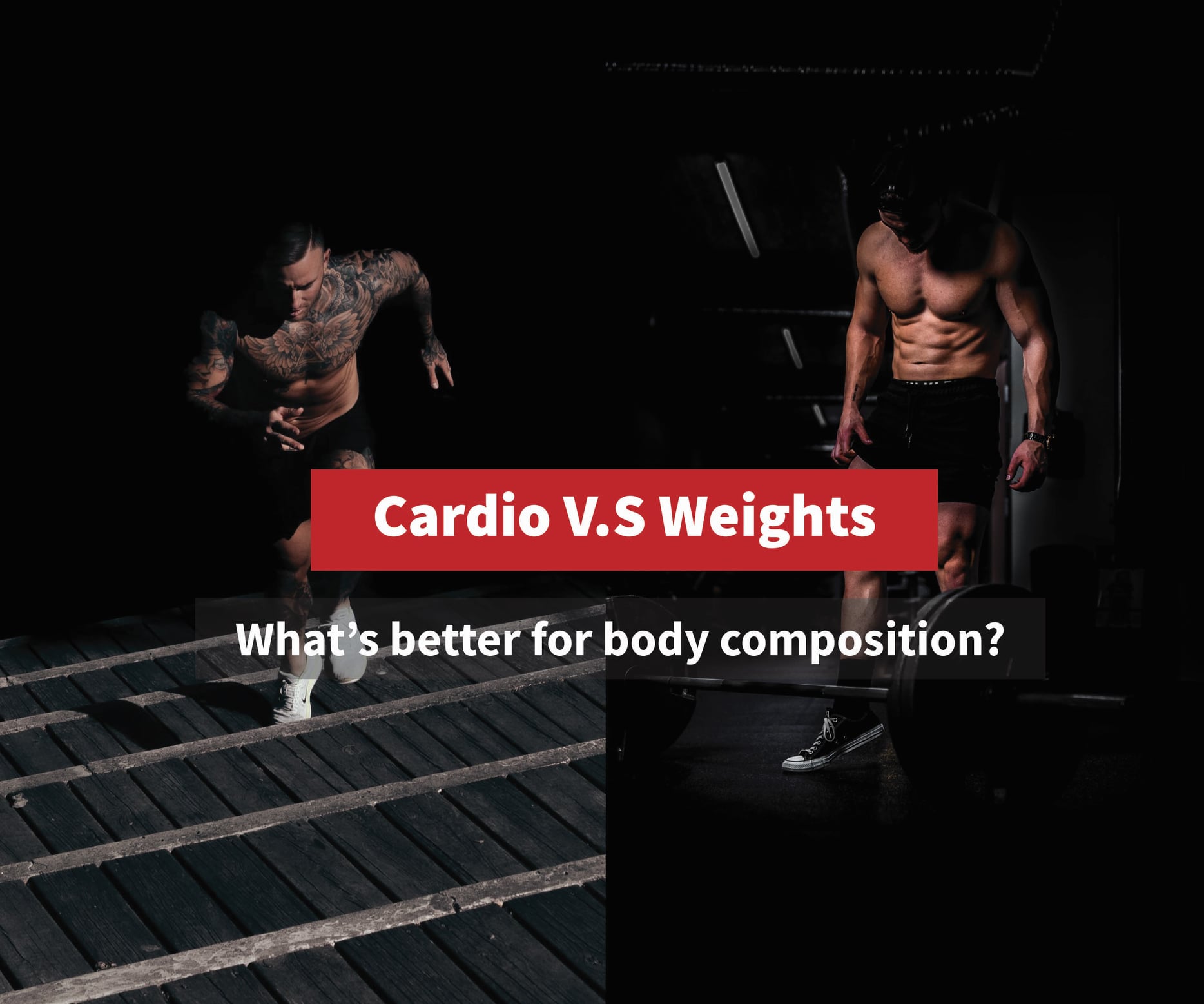Highlights
- Aerobic Exercise- the ultimate exercise for increasing heart health, vascular health, and metabolic rate.
- Resistance Training- the best training for gaining muscle strength and function.
- Concurrent Training- get the best of both aerobic and resistance training.
When you think of exercise, what immediately comes to mind?
Going out for a jog? Loading up weights at the squat rack? Or maybe both?
All of those classify as exercise, but they serve different purposes. If you want to increase your squat 1-repetition maximum by 50 pounds, a daily cycling class won’t get you there.
It’s clear that your body adapts differently to different types of exercise, but how does that happen and what does it mean for your health?
This article will break down the benefits of different fitness regimens: aerobic, resistance, and concurrent training. In the process of reading this article, you will soon discover that your fitness goals can be achieved with some basic exercise physiology background!
What is Aerobic Training?

Aerobic exercise stimulates the heart and breathing rate to provide your muscles with oxygenated blood. The energy that powers such exercise is produced in muscle cells primarily via an oxidative pathway, meaning oxygen is required.
That explains all the heavy breathing when you go out for a run, doesn’t it?
That oxygen is delivered via blood being pumped from your heart, through your arteries, and returning to the heart through your veins.
So, it’s apparent that aerobic exercise primarily works two systems: energy production in your muscle cells and blood delivery in your cardiovascular system.
So how does this help you?
Does Aerobic Training Strengthen The Heart?
Aerobic exercise trains the heart to be stronger and more efficient at circulating blood. With aerobic exercise, the chamber of the heart (left ventricle) that pumps blood to the rest of the body literally gets larger and squeezes out more blood per pump, which means its stroke volume is increased. This results in an improved capacity for cardiac output, which is the quantity of blood pumped by the heart per minute.
If you’ve heard of hypertrophic cardiomyopathy (enlarged heart), it may seem counterintuitive that a large left ventricle muscle is a beneficial adaptation to aerobic exercise. But, important characteristics differentiate an enlarged left ventricle due to healthy aerobic exercise training and one resulting from disease.
A strong, efficient heart is exactly what you want in order to live a long and healthy life.
If your heart is bigger and stronger, pumping more blood per beat, it doesn’t have to beat as rapidly. That’s why you often hear of elite endurance athletes with resting heart rates in the 30’s and 40’s. This is more important than it may seem: lower resting heart rate is associated with reduced risk of cardiovascular disease.
All these cardiac adaptations are aided by an increase in blood volume that occurs with aerobic exercise training. Without getting too technical, the expanded blood volume improves the heart’s contractility and filling capacity, allowing it to pump more blood per beat.
Although the heart is a different type of muscle than what’s in your arms or legs, it’s still subject to a related function. It contracts in order to move blood throughout the body. In addition to making it stronger and more efficient, you can also lighten the heart’s load by decreasing the resistance it faces.
How does aerobic training reduce arterial stiffness?
Each time the heart beats, arteries in the body provide resistance to the blood flowing.
The resistance provided by arteries is variable, though. Aerobic exercise training reduces the heart’s workload by reducing arterial stiffness.
When you perform aerobic exercise, your heart rate increases, pushing more blood through your arteries than at rest. The inner wall of your arteries feel the increased blood flow, and through a series of mechanisms, causes your arteries to widen.
As you train and your arteries experience this regularly, they become more effective at expanding. If you don’t regularly do aerobic exercise, your arteries never experience this stretch and they literally stiffen up (it is harder for your heart to pump blood through a stiff tube). Additionally, arterial stiffness is associated with coronary artery plaque development, the stuff that causes heart attacks.
Aerobic exercise also impacts your vascular system by promoting capillary growth. Capillaries are the microscopic vessels where oxygen diffuses from red blood cells to muscle (and other) cells.
Aerobic exercise requires increased oxygen delivery to the muscle to produce energy, so your body grows more capillaries to be able to better handle the energy demand.
How does aerobic exercise affect your metabolism?
Along with cardiovascular adaptation, aerobic exercise substantially impacts your muscles’ energy production system. Once blood delivers oxygen to the muscle cells, they still have to use it to produce energy that powers all the exercise you’re doing.
Aerobic exercise also relies to a great extent on breaking down fat molecules for energy, which can only happen within mitochondria.
Consequently, aerobic exercise training drastically improves your muscle cells’ ability to burn fat by generating more mitochondria and improving their functionality.
High-intensity aerobic exercise also increases your excess post-exercise oxygen consumption (EPOC), resulting in increased calorie burn after training sessions in addition to what you burned while exercising. However, to maintain EPOC as you gain fitness, make sure to gradually progress your training intensity.
How Does Aerobic Training Impact Body Composition?
People who struggle with being overweight or obese have likely been told that aerobic exercise is a cornerstone of any weight loss routine.
The key to aerobic exercise is that it keeps the heart rate elevated for a continuous amount of time. While this will help to burn calories, it has specific impacts on body composition that people should keep in mind.
A study published by the American Physiological Society took a look at the effects of regular exercise in adults. This study lasted eight months and placed adults on either aerobic training programs, resistance training programs, or a combined program. The researchers found that those in the aerobic training program lost more weight overall, including more fat mass than those in the resistance training program. On the other hand, those in the resistance training program gained more fat-free mass, including lean muscle.
To recap, aerobic training causes the cardiorespiratory system to adapt. It maintains heart function and health and keeps your energy metabolism system running.
Aerobic exercise is a jackpot for fitness and a key element of maintaining your health. But it may not get you big muscles or make your body much stronger…what will?
What Is Resistance Training?

Resistance exercise is training that progressively overloads your muscles. Some examples of resistance training would be traditional weightlifting, bodyweight exercises like pushups and pullups, and resistance band exercises. These types of exercises are meant to make your muscles bigger, stronger, more powerful, and more functional.
Specific adaptations to resistance training begin within the muscle cells. However, you’ll still get systemic benefits ranging from muscle growth to cardiovascular benefit.
To gain a deeper understanding of the whole-body performance and health effects of resistance training, read into how resistance exercise affects muscle at the microscopic level.
How does muscle adaptation work?
The point of resistance training is to make muscles function more effectively. This all starts with the contractile proteins that act to control muscle shortening and lengthening.
When you do resistance exercise, some of those proteins get yanked apart. That, along with the stress your muscle experienced, is the stimulus for your muscle to rebuild – this time bigger, stronger, or more powerful than before.
After resistance exercise, your muscle synthesizes proteins (this is aided by nutritional stimuli i.e. protein consumption). Special cells known as satellite cells also spring into action to help build up the broken down muscle. They normally lie quietly adjacent to muscle cells, but resistance exercise tells them to get to work.
Satellite cells combine with the muscle cells that were strained and damaged during your resistance training session. In doing so, they lend their molecular machinery to support protein synthesis that leads to muscle hypertrophy.
Resistance training with loads over 60% of your 1-repetition maximum results in hypertrophy of primarily type II fibers (‘fast-twitch’). These fibers are capable of rapid contraction with high force but tire more easily.
These micro-level adaptations matter to athletes and the general population alike. When you make measurable gains in muscle mass, strength, or power, you can thank the protein synthesis and fiber-specific adaptations that occurred within your muscle cells.
How does muscle hypertrophy occur?
All those microscopic adaptations add up to cause changes that are easier to grasp. Resistance training at the proper intensity leads to measurable muscle hypertrophy. Strength improves in part due to changes to the neuromuscular system. Control over your muscles is typically a balance between competing neural signals. Some of those signals tell the muscle to contract, while others prevent contraction.
Regular resistance training can reduce neural inhibition that normally limits the strength and/or endurance of the muscle.
Muscle accounts for roughly 20% of resting energy expenditure, so it impacts on calorie burn and body composition is meaningful. Not only that, but you can’t increase the mass of most of the other organs that account for resting energy expenditure, like the liver, heart, brain, and kidney. Muscle is different because it hypertrophies, growing larger, and expending more calories.
By packing on muscle, not only do you increase strength, power, and function, but you also raise your basal metabolic rate. And by doing so, you’ll see an increase in your metabolism and an improvement in your health.
Does Weight Lifting Count as Cardio?
If you’ve ever lifted weights or done resistance exercise, you’ve probably felt your heart pounding with the exertion.
Does that mean you’re getting cardiovascular and metabolic adaptations like you would with aerobic training?
Maybe not.
Resistance exercise does raise your energy expenditure. But it does so differently, and to a lesser extent, than aerobic exercise.
Resistance exercise trains your energy production systems but has less impact on the aerobic energy systems.
Is Resistance Training For Everyone?
Even if you’re not an athlete. Resistance training is important for functional fitness.
Functional strength training is defined as: “Training that attempts to mimic the specific physiological demands of real-life activities.” Unlike more traditional strength training (which focuses on specific muscle groups during each exercise), functional training focuses on whole muscle groups to train the body for daily demands.
A common misconception is that you may be too old for resistance training. But clinical data from a multitude of sources clearly shows the benefits of improving one’s functional fitness level, particularly for older adults.
Functional training such as resistance exercises and bodyweight movements can help you become stronger, more flexible, agiler and better equipped to handle day-to-day feats of strength and athleticism that are often overlooked. Plus, it can help you become less injury-prone.
A study recruited seniors who were struggling with their physical abilities and placed them in a resistance-training exercise program. At the end, the researchers observed an increase in their fat-free mass, their muscle mass, their gait speed, and their overall physical capacity. This shows that resistance training not only improved body composition in the elderly but also helped to increase mobility to improve their ability to complete day to day activities.
How Does Resistance Training Impact Body Composition?
A study found that regardless of the frequency of the resistance training program, participants increased overall muscle strength. The participants increased lean body composition.
Resistance training is a great way to increase lean muscle mass, and it improves the physical capacity of the elderly, leading to significant improvements in their quality of life. This evidence supports the positive capabilities resistance training has in both building lean body mass as well as maintaining lean mass in aging populations who are at risk of muscle loss.
These adaptations to resistance exercise impact your health and physical performance. Your muscles carry you through the day and increase performance if you’re an athlete.
Breaking down and building up muscle through resistance training is essential to maintaining function as you age. Loss of muscle mass even threatens some people’s capacity to live independently.
In terms of body composition, muscle mass is not only an important component to maintain, but it also contributes to your resting metabolism, helping you maintain a healthy energy balance.
Resistance training benefits the cardiovascular system, but its role is mainly for muscle gain and function.
But, how can you reap the benefits of both aerobic and resistance training? Do you just combine the two however you want?
What is Concurrent Training?
Concurrent training is the combination of both aerobic and resistance exercises within the same training session. Aerobic and resistance exercise impacts your body differently, so it follows that they each cause adaptations via different mechanisms.
How should I order my aerobic and resistance workouts?
In practice, aerobic/interval and resistance training don’t seem to interfere with each others’ adaptations all that much. But, understanding a few specifics about concurrent training will allow you to make good decisions about your exercise program.
The type of aerobic training determines how it interacts with resistance exercise adaptations. While strength and hypertrophy gains could be diminished by adding run training to a resistance program, cycling does not have the same effect.
Why? Researchers aren’t exactly sure. But it may have to do with two factors:
- Cycling ergonomics are more similar to traditional lower-body resistance exercises
- Eccentric muscle contractions in running result in muscle damage, while the concentric contractions in cycling do not (to the same extent).
The modality of aerobic exercise (running versus cycling) is important to understanding the effect of concurrent training, but so are frequency and duration. In some cases the more aerobic training you add to your program, the more you may impact muscular adaptation. So pair your training programs correctly; a running program in conjunction with an upper-body lifting exercise may benefit overall, but a running/leg press workout every day could interfere with one another.
And if you’re doing both aerobic and resistance exercise in the same session at the gym, or even on the same day, you’ll want to consider the order in which you do the exercises. It’s basically a matter of prioritization.
If your priority is on building aerobic fitness and performing well in a running race, do your aerobic exercise first in a session, followed by resistance exercise.
On the other hand, if your priority is building strength and muscle, you’ll want to do resistance exercise followed by aerobic.
However, the order probably doesn’t matter if you’re untrained.
The takeaway: if you’re untrained and haven’t set distinct fitness goals yet, don’t worry yet about the order of aerobic or resistance training. Do both and start exercising your way to health!
How do you develop a Concurrent Training program that’s right for you?
If you’re just going to the gym to stay healthy, the benefit of gaining both aerobic and muscular fitness is well worth it.
To get the most benefit from your hard work at the gym, make sure to use these tips:
- If your priority is muscle strength and growth, choose aerobic exercise like cycling rather than running to complement your lifting routine.
- Consume enough protein and carbohydrates to stimulate muscle growth and recovery after workouts
- If you alternate aerobic and resistance sessions, maximize recovery time between sessions (separate them by at least 6 hours)
Chances are that concurrent training is right for you, so go get started!
A Well-Rounded Exercise Program

As people continue to struggle with obesity and functional fitness as they age, exercise is more important than ever. It is vital to combine diet and exercise to not only lose weight but have a favorable impact on body composition and your lifespan.
Furthermore, it is important to have a well-rounded exercise routine that touches on all types of fitness. Aerobic exercise is effective at maintaining an elevated heart rate and losing fat-free mass. On the other hand, resistance training helps to build lean muscle mass. You can combine the two, with concurrent training, or jump into an explosive HIIT workout when you don’t have much time or need a motivation boost.
With this insight, you will be better equipped to understand why exercise is important for your health (a great motivator), how different types of exercise interact, and which ones are best suited for your needs.











